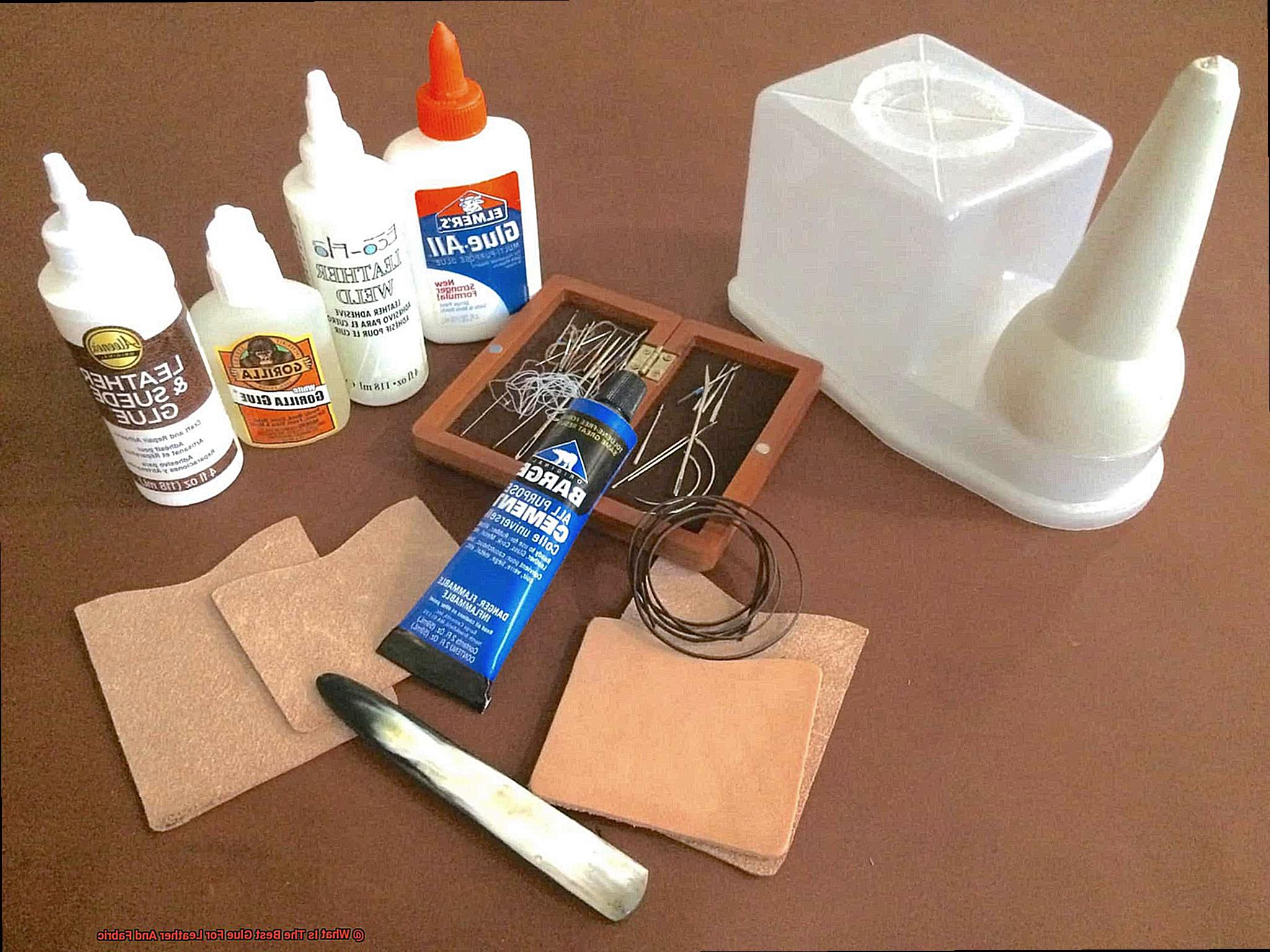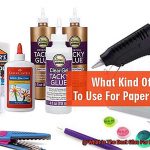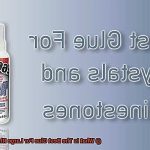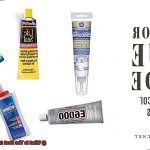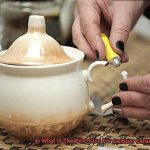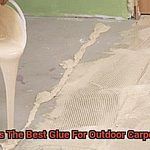Having trouble finding the perfect glue for leather and fabric?
Don’t sweat it. In this blog post, we’re diving into the exciting world of glues to uncover the ultimate adhesive for bonding these two materials.
Whether you’re fixing up a torn leather handbag or crafting a jaw-dropping fabric masterpiece, finding the right glue is key to ensuring your work stands the test of time. With so many options out there, choosing can feel like a daunting task.
We’ll explore what makes a great adhesive and reveal the champion that guarantees a rock-solid bond between leather and fabric.
Get ready to embark on a glue journey that’ll leave you feeling confident in your choice for your next project.
Types of Glue for Leather and Fabric
Contents
- 1 Types of Glue for Leather and Fabric
- 2 Considerations When Choosing the Best Glue
- 3 Different Types of Materials and Their Glue Requirements
- 4 Intended Use of the Glued Material
- 5 Flexibility and Stretchiness of the Materials
- 6 Adhesive Strength of the Glue
- 7 Durability of the Glue
- 8 Ease of Use and Application
- 9 Conclusion
Choosing the perfect glue for bonding leather and fabric is crucial to ensure a strong and durable bond. With numerous options available, it can be overwhelming to determine which glue will provide the best results for your specific project. In this article, we will delve into the different types of glues suitable for leather and fabric and discuss the essential factors to consider when selecting the ideal adhesive.
Fabric Glue:
Fabric glue is a popular choice for bonding various types of fabric, including cotton, polyester, and nylon. This water-based adhesive dries clear, offering an invisible bond that does not detract from the aesthetic appeal of the fabric. Moreover, fabric glue remains flexible even after drying, allowing the fabric to maintain its natural movement. It is ideal for visible applications such as hemming or applique work, where an inconspicuous bond is desired.
Leather Glue:
Leather glue is specifically designed to bond leather pieces together. Available in liquid or gel form, this adhesive creates a durable bond on leather surfaces. It is essential to choose a leather glue that is suitable for the specific type of leather being worked with, as different leathers may have unique properties. Leather glue is perfect for repairing shoes, bags, or furniture upholstery, providing a reliable and long-lasting bond.
Contact Cement:
Contact cement is a versatile adhesive suitable for both leather and fabric bonding. This strong adhesive instantly forms a bond when the two surfaces are pressed together. It is typically applied to both surfaces and allowed to dry before joining them together. Contact cement creates a permanent bond that is resistant to heat and moisture, making it ideal for heavy-duty projects that require exceptional strength.
Epoxy Resin:
Epoxy resin is a two-part adhesive consisting of a resin and a hardener. This powerful adhesive provides an incredibly strong bond and is resistant to heat, water, and chemicals. Epoxy resin is perfect for bonding different materials together, such as leather to metal or fabric to plastic. However, it requires careful mixing and can be messy to work with, so attention to detail is crucial when using this adhesive.
Hot Glue:
Hot glue guns are a popular choice for crafting and DIY projects involving fabric and some types of leather. The hot glue sticks are melted in the gun and then applied to the surfaces being bonded. Although hot glue forms a strong bond quickly, it may not be as durable as other types of glue, especially in high-stress areas. Hot glue is ideal for quick fixes or temporary projects where immediate adhesion is needed.
Factors to Consider:
When selecting the best glue for leather and fabric, several factors should be taken into account. These include the type of materials being bonded, the strength of the bond required, and the intended use of the finished project.
Considerations When Choosing the Best Glue
Choosing the right glue for your leather and fabric projects can make all the difference in ensuring a strong and long-lasting bond. With so many options available, it can be overwhelming to know where to start. In this article, we will explore the key considerations you should keep in mind when selecting the best glue for your leather and fabric needs.
Compatibility:
When it comes to gluing leather and fabric, compatibility is crucial. Not all glues are designed to work on both materials, so it’s important to choose a glue specifically labeled for use on leather and fabric. This ensures that the adhesive bonds effectively with the surfaces, creating a secure connection.
Strength:
Consider the strength requirements of your project. If you’re working on heavy-duty leather or need to attach fabrics that will undergo stress or tension, opt for a stronger adhesive. Lightweight fabric projects may not require as much strength, allowing you to choose a less potent adhesive.
Drying Time:
Time is of the essence, especially when you’re eager to complete your project or have multiple tasks on your plate. Check the drying time indicated on the glue’s label or specifications to determine if it aligns with your needs. Quick-drying glues are perfect for those on a tight schedule, while others may prefer longer drying times for more intricate projects.
Flexibility:
Leather and fabric are prone to movement and flexing, so it’s essential to choose a glue that can withstand these stresses without cracking or becoming brittle over time. Look for glues that offer flexibility and elasticity when dry to ensure durability in your bonded materials.
Water Resistance:
If your leather or fabric project will encounter moisture or require occasional cleaning, selecting a water-resistant or waterproof glue is essential. This protects the bond from deterioration when exposed to water, ensuring the longevity of your creation.
Application Method:
Consider the ease of application when choosing a glue for leather and fabric. Some glues come in tubes with applicator tips, providing better control over the amount applied. Others may require brushes or spatulas. Choose a method that suits your preferences and the specific requirements of your project.
Safety:
Always prioritize safety when working with glue. Some adhesives contain harmful chemicals or emit strong fumes, so use them in well-ventilated areas and follow the manufacturer’s instructions regarding safety precautions. Look for glues labeled as non-toxic or low odor if you have concerns about allergies or sensitivities.
Different Types of Materials and Their Glue Requirements
Today, we delve into the captivating world of glues and their enchanting ability to bond different materials. Are you ready to discover the secret to choosing the perfect glue for your leather and fabric projects? Let’s dive in.
Understanding Leather’s Unique Needs:
Leather, that marvelous material. From sumptuous upholstery to chic accessories, it’s a crafter’s dream. But beware – leather requires special attention when it comes to gluing. The key is selecting flexible and robust leather glues that can handle the daily stress and strain endured by leather items.
The Wonders of Fabric Variety:
Step into the vibrant realm of fabrics. Cotton, silk, polyester, nylon – fabrics come in an array of shapes and sizes. And guess what? Each fabric may demand a different glue for a triumphant bond. So, before you find yourself in a sticky situation, consider the specific type of fabric.
Common Glues for Both Leather and Fabric:
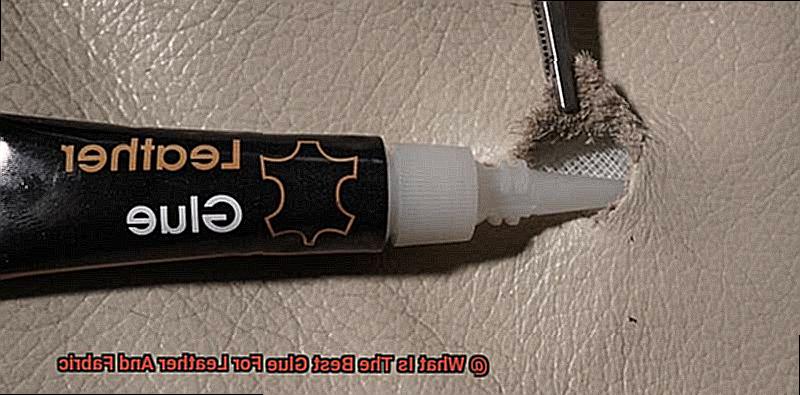
Great news. There are glues that work wonders on both leather and fabric. One popular option is contact cement – mighty, flexible, and user-friendly. Simply apply it to both surfaces, allow it to become tacky, then press them together for a steadfast bond.
Fabric Glue: A True Friend to Fabrics:
When it comes to fabric bonding, fabric glue becomes your loyal companion. Tailor-made for fabrics, this glue offers flexibility and washability. Remember to choose a fabric glue that suits your specific fabric type for optimum results.
The Mighty Epoxy Adhesives:
For heavy-duty applications or when an extra-strong bond is needed, epoxy adhesives step up to the challenge. These awe-inspiring two-component wonders blend together before application, providing exceptional strength.
Safety First: Choose Wisely:
Gluing should be a delightful experience, not one filled with strong odors or harmful chemicals. Some glues contain harsh ingredients and emit pungent smells. To avoid discomfort, opt for low-odor and safe glues, especially when working with delicate materials or in poorly ventilated areas.
Intended Use of the Glued Material
When it comes to choosing the best glue for leather and fabric, the intended use of the glued material is crucial. Different projects require different types of glue based on their specific needs and requirements. Let’s dive into the factors to consider:
- Strength: For leather projects that need a strong bond, look for a glue specifically designed for leather. These glues provide a durable and flexible bond that can withstand the stress and strain of leather materials. Fabric glues should also offer a reliable bond without compromising the fabric’s integrity and appearance.
- Flexibility: Leather and fabric materials often require flexibility, especially in clothing or accessories. Choose a glue that maintains flexibility even after drying to avoid stiffness in your leather jacket or loss of softness in fabric crafts.
- Durability: If your project will be exposed to moisture or extreme temperatures, opt for waterproof or weather-resistant glue. This prevents deterioration over time due to environmental factors.
- Specific Requirements: Each project may have specific requirements to consider. Heavy-duty materials or objects subjected to constant movement or stress need a glue that can withstand such conditions. Certain types of leather or fabric may require specific glues due to their composition or texture. Always test the glue on a small area to ensure compatibility and avoid potential damage.
Flexibility and Stretchiness of the Materials
Flexibility and stretchiness are crucial attributes to consider when choosing a glue for leather and fabric. These materials demand a glue that can withstand movement, stretching, and bending without cracking or becoming brittle. Let’s explore the world of flexibility and stretchiness in glues, shall we?
When it comes to leather, finding the right glue is essential to maintain its natural flexibility. Leather possesses the remarkable ability to stretch and bend, so using a rigid glue would be a grave mistake. Imagine your supple leather transformed into an uncomfortable stiff mess – not a pretty sight, right? To avoid such a catastrophe, look for a glue specifically designed for bonding leather that offers flexibility and allows the material to retain its natural movement.
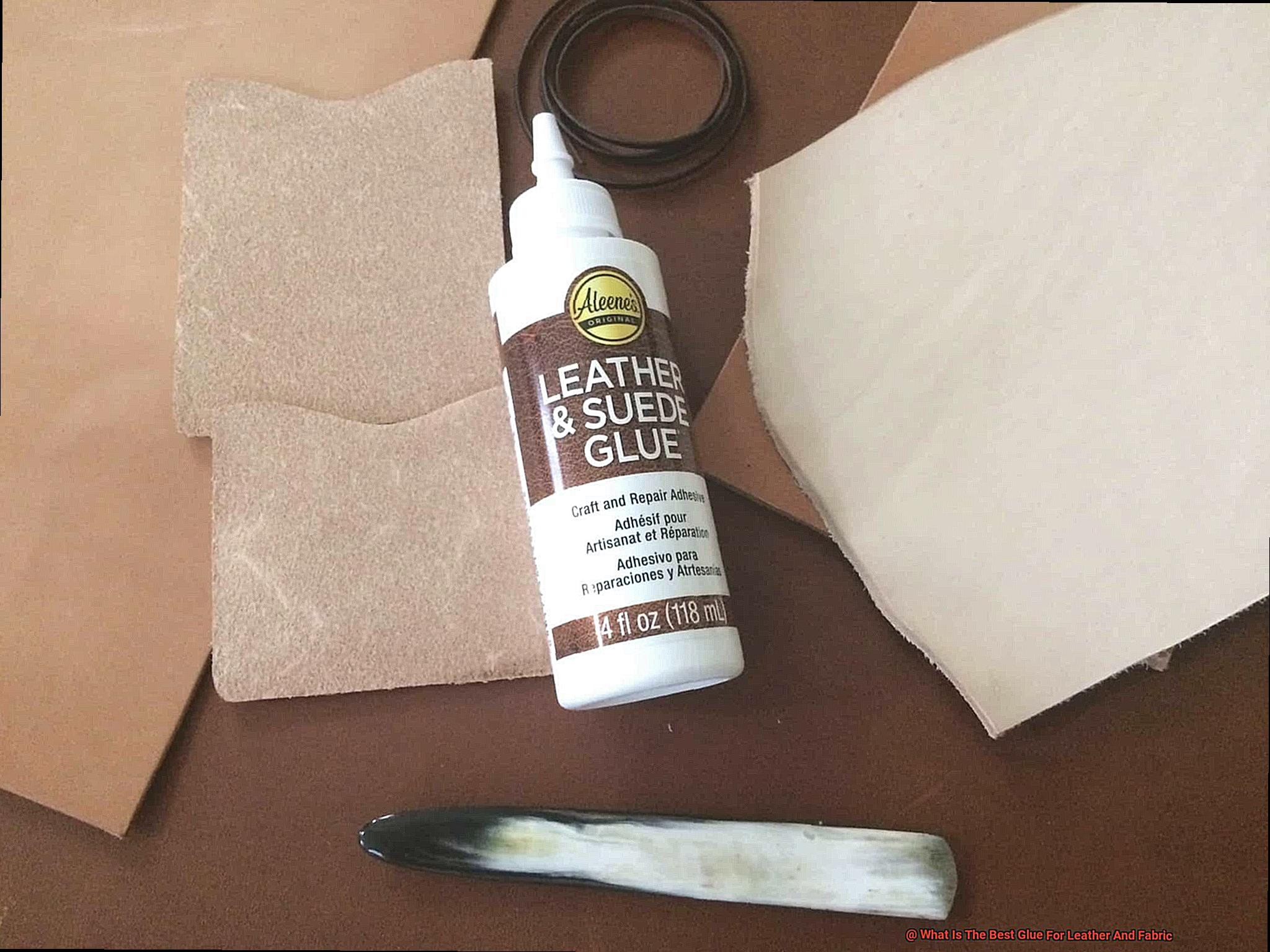
Now let’s shift our focus to fabric. Fabrics are often used in garments or upholstery, where they must endure regular stretching and movement. Picture yourself wearing pants with a rigidly glued seam – it’s as if you’re trapped in an unforgiving prison. To prevent such discomfort, opt for a flexible glue formulated specifically for fabric bonding. You need a glue that can stretch along with the fabric without tearing or cracking the adhesive layer.
So, which glues check the flexibility box? One notable option is contact cement. This adhesive is celebrated for its ability to remain flexible even after drying, making it ideal for leather and fabric bonding. Just remember to coat both surfaces with the adhesive and allow it to dry before joining them together.
Another option worth considering is epoxy adhesive. Renowned for its strength and durability, epoxy can also provide a certain level of flexibility when used correctly. Look for epoxy adhesives specially formulated for flexible bonding applications – these will contain additives that enhance their flexibility.
But hold on, we’re not done yet. Prepping your surfaces plays a pivotal role in achieving optimal results. Thoroughly clean both the leather and fabric surfaces, ensuring they are free from dirt, oils, or finishes that may hinder adhesion. A slight roughening with sandpaper will create an ideal bond. And don’t forget to apply the glue evenly and allow it to dry completely before joining the materials together.
So, my crafty friends, when it comes to gluing leather and fabric, flexibility and stretchiness are paramount. Choose glues specifically formulated for these materials that offer flexibility without compromising adhesive strength. Consider contact cement or flexible epoxy adhesives as your trusty sidekicks in the world of leather and fabric bonding. And remember, prep those surfaces like a pro for the best results.
Adhesive Strength of the Glue
Fear not. Today, we embark on a deep dive into the world of glue to uncover the secret behind its adhesive strength. Whether you’re a DIY enthusiast or a professional crafter, understanding what makes glue tick will help you select the perfect adhesive for your leather and fabric projects.
Chemical Composition and Formulation:
The adhesive strength of glue lies in its chemical composition and formulation. Different types of glues possess varying adhesive strengths, making it crucial to find one that suits your project’s specific needs. Stronger adhesives are preferred for heavy-duty applications that require exceptional durability.
Epoxy Glue:
One type of glue that packs a powerful punch in terms of adhesive strength is epoxy glue. This versatile adhesive can bond an extensive range of materials, including leather and fabric. Renowned for its strong and durable hold, epoxy glue can withstand heavy loads and harsh conditions. However, keep in mind that epoxy glues often require mixing two components together before application.
Polyurethane Glue:
For exceptional adhesive strength, consider polyurethane glue. Widely used in woodworking, this robust adhesive also works wonders on leather and fabric. Its strong grip enables it to stand up against tension and stress like a true champion.
Contact Cement:
When flexibility in bonding is necessary, turn to contact cement. This type of glue offers good adhesive strength while allowing the bonded materials some freedom to move. It rapidly forms a strong bond upon contact, making it perfect for projects requiring immediate adhesion.
Proper Application:
Remember, even the strongest glue won’t perform optimally if not applied correctly or if surfaces aren’t adequately prepared. Before applying the glue, ensure that you thoroughly clean and prep the surfaces. This step enhances adhesive strength and guarantees a successful, long-lasting bond.
Durability of the Glue
Today, we embark on an exhilarating journey through the world of glue, unlocking the secrets behind its adhesive powers and discovering how to choose the perfect glue for your leather and fabric projects. Join us as we delve into the key factors that ensure durability, from the unbreakable strength of the bond to the graceful flexibility and unwavering resistance to various conditions.
The Power of Bonding:
When it comes to selecting a glue for leather and fabric, strength is of utmost importance. Opt for a glue specifically designed for these materials, as it will possess the superpowers necessary to create a robust and enduring bond. This ensures that your creations or repairs will hold together, standing strong against the relentless test of time.
Flexibility: The Dance of Durability:
Leather and fabric materials are like dancers gracefully gliding across a stage, constantly in motion. Your glue should be their partner, capable of effortlessly withstanding movement and stretching without losing its adhesive properties. Seek out a glue that remains flexible even after drying, allowing it to perform the intricate dance of durability alongside your materials without cracking or breaking.
Resistance: Conquering Environmental Challenges:
Leather and fabric items can face formidable challenges in their environment, including heat, moisture, and more. To ensure durability, choose a glue with the strength to resist these elements. A waterproof or water-resistant glue will keep your creations intact even when exposed to damp conditions. Additionally, a heat-resistant glue will prevent your projects from unraveling under scorching temperatures.
Longevity: The Test of Time:
What good is a glue if it loses its effectiveness over time? When selecting a glue, consider its long-term durability. Choose one that has been tested and proven to maintain its adhesive properties over an extended period. With such a glue in your arsenal, your leather and fabric projects will not merely endure, but thrive for years to come.
Seeking the Wisdom of Others:
In the vast crafting community, knowledge is power. Before making your final decision, seek the wisdom of fellow crafters and professionals who have wielded glues on leather and fabric projects. Their experiences will illuminate the path to durability, providing valuable insights into the adhesive superpowers of different glues and empowering you to make an informed choice.
Ease of Use and Application
From mending torn leather jackets to crafting stunning fabric creations, glue is the unsung hero that bonds materials together. But with a myriad of options available, how do you select the perfect adhesive for your leather and fabric projects? Fear not, fellow crafters. We are here to unravel the mysteries and guide you towards glue greatness.
Factors to Consider for Ease of Use and Application:
Ready-to-use or Prep Required?
When choosing glue, consider whether it requires mixing or preparation before use or if it is ready straight out of the bottle. Tailor your choice to suit your preferences and project requirements.
Application Methods:
Look for glues that offer convenient application methods such as squeeze bottles, applicator tips, or spray bottles. These options provide control over the glue flow, allowing for precise application exactly where it’s needed.
Time is on Your Side:
Take into account the drying time of the glue. Quick-bonding glues enable immediate handling, while slower-drying ones offer more time to align and adjust leather or fabric pieces before they set.
The Invisible Touch:
For transparent or light-colored materials, opt for a clear glue to avoid unsightly residue or staining. This ensures that your project remains picture-perfect.
Cleanup Made Easy:
Nobody relishes spending hours scrubbing away stubborn glue residue. Choose glues that can be easily cleaned with water or solvents, saving you precious time and effort.
Safety First:
Always prioritize safety precautions associated with the glue you choose. Ensure proper ventilation if the adhesive emits strong fumes, and follow instructions carefully to avoid any potential harm to yourself or your project.
FbUdIVIux_A” >
Conclusion
In conclusion, when it comes to finding the best glue for leather and fabric, there are a few top contenders that stand out.
One of these is E6000 Craft Adhesive. With its strong bond and versatility, it is a popular choice among crafters and DIY enthusiasts.
Another great option is Aleene’s Original Tacky Glue, known for its quick-drying formula and durability. If you’re looking for something specifically designed for leather, Barge All-Purpose Cement is highly recommended for its superior adhesive properties.
Ultimately, the best glue will depend on your specific project and preferences, but these options are sure to provide reliable results.

